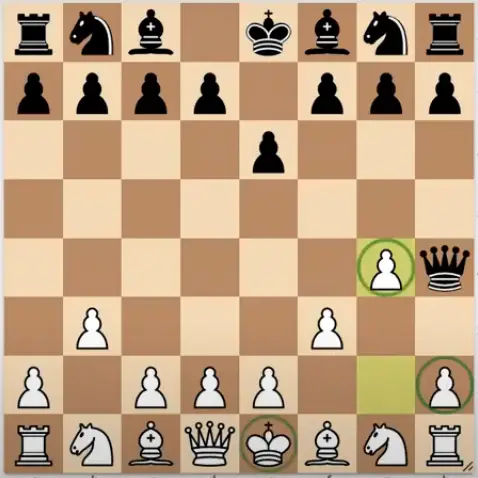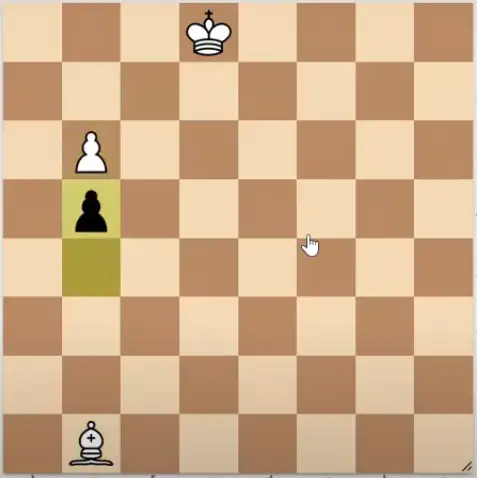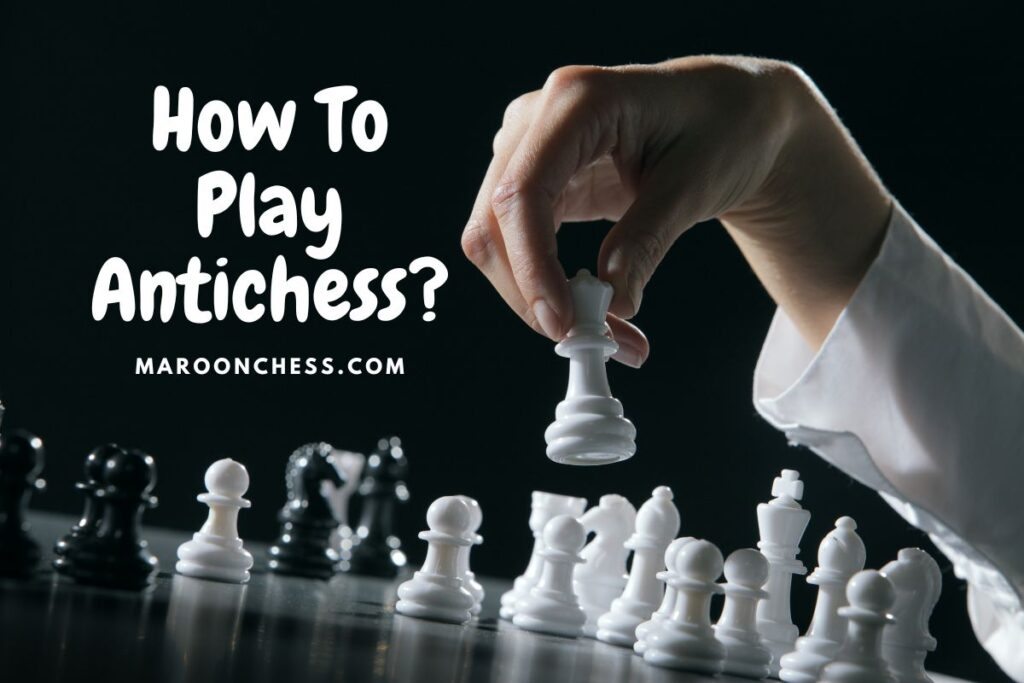Antichess is a variant of chess that goes against the normal rules of chess as we know it. It can also be called losing chess, suicide chess or giveaway chess as the main objective is to be the first player to lose all your pieces (including the king).
In this article, we will explain how to play antichess and give you some tips and strategies that will allow you to win more games of this variant. Without further ado, let’s jump right in!
How To Play Antichess
- The main strategy in antichess variant is to give away all your pieces on the board, including the king.
- If a capture is available to you, you MUST take it.
- If you have multiple captures available to you, then you do have the choice to pick which one to take.
- There is no check or checkmate involved.
- The king may be captured like any other piece and can expose itself to capture.
- You are not allowed to castle.
- A pawn is allowed to promote to a king.
- If the game ends in a stalemate, then that player wins, given that he has no legal moves left.
- The game is a draw if the players agree, you reach the 50 move rule, 3 move repetition, or it is impossible for someone to win.(dead draw)
Now that we know the general guidelines of antichess, let’s dive into how each of these rules work. We will also look at some practical examples.
Antichess Strategy
The player with zero pieces left on the board wins the game. This may sound counterintuitive compared to regular chess, but that’s how the variant of antichess works.
Because the rule says that a player MUST capture a piece if it’s available for capture, then you should formulate a strategy that will force your opponent to take all your pieces off the board.
The strategy that seems to work in many cases is to get your opponent to open lines for his bishops and rooks. Bishops are actually a weakness in antichess once they are developed on open lines. Conversely, you should avoid letting your bishops or rooks out easily because they will be compelled to capture your opponent’s pieces. And, the player who can get rid of all his pieces wins the game.
Here is an illustrative game below
Notice white’s strategy? The strategy is to put all your pieces on the colored square that the enemy bishop is on so that it will be forced to capture your pieces. Because of black’s single bishop, White was able to give away all his pieces and win the game!
The general guideline is try to keep as much of your long ranged pieces locked behind your pawns so that they won’t be compelled to capture the opposing piece(s).
There Is No Check Or Checkmate
Unlike normal chess, there is no check or checkmate in antichess since the goal is to give away all your pieces.
In the following position, black just played the move Queen to h4. In normal chess, this would be check. However in antichess, you are not compelled to protect your king from being captured.
This is not check. White is not forced to safeguard the king.

White to move can even play pawn to g4 and the game continues. In real chess however, white would have to block the check with the move pawn to g3.

After pawn to g4, the black queen is compelled to capture. Also, according to rules of antichess variant, you can choose which piece to take if you have multiple captures available. Therefore, in the above position, there are 3 options black can choose from. He can choose to capture the h2 pawn, the g4 pawn or the white king on e1.
After a move like Qxe1, white must recapture.
Antichess Stalemate Explained
Stalemate in antichess occurs when there are no legal moves left for a player to make. If this should happen then the stalemated players wins the game. The king doesn’t have to be present on the board for stalemate to occur. You could get stalemated with a single pawn left on the board.
Therefore, it’s always important that you watch out for stalemating ideas in the position. You don’t want to throw away a game just by placing your opponent in stalemate, nor do you want to miss the chance to get a stalemate and win the game.
White to move in this position. Whatever white plays, the game ends in stalemate as black won’t have any legal moves since his pawn is blockaded. Therefore, black wins the game as a result of stalemate.

It’s much easier to get a stalemate in antichess than in regular chess. In normal chess, your king is on the board. Therefore, if your pawns are all blockaded like the example above, you will always have a move to make with your king, unless there are no legal moves for the king.
The strategy to stalemate in antichess is to give up all your major and minor pieces such that only the pawns are left on the board. Close up the position using your pawns so that they can’t capture a piece or move forward. This will likely result in stalemate.
When is The Game Drawn?
Antichess game is drawn in a few similar ways as regular chess. The only difference between both is stalemate. In regular chess, stalemate draws the game, while in antichess, the player who gets stalemated wins the game. Here is when a game is drawn in antichess:
- The 50 move rule: If 50 moves have been passed without a pawn advance or capture, then the game is declared drawn.
- 3 move repetition: If the position appears 3 times (not necessarily back to back move), then the game is drawn.
- Dead draw: If the position is dead drawn. Meaning there is no progress to be made and no one can lose the game even if they try. This is often seen in bishops of opposite colored endgame.
Bishops of opposite color endgame is drawn. They are in different dimensions (on different colored squares) and cannot cross over to capture the other bishop.

Pawn Promotion In Antichess Explained
Promotion in chess is when a pawn advances to the last rank of the chess board and gets exchanged for a piece of higher value. You can exchange this pawn for a queen, rook, bishop or knight.
However, in antichess, you are given one more option. You can promote your pawn to a queen, rook, bishop, knight or KING.
Yes, the pawn can be promoted to a king since we are not dealing with checkmate here. In normal chess however, this would be illegal.
Castling In Antichess?
Castling is not permitted in antichess. There will be no reason to castle the king because the goal is not to checkmate the king. Therefore, it does not need special attention unlike regular chess where king safety is number one priority.
The king can be captured in antichess and the game still continues. The only precaution you need to take is to not let your bishops or rooks out easily. Keep these piece locked behind pawns so that they won’t be forced to capture your opponent’s pieces.
Forced Loss
As you start to play antichess seriously, you will need to learn certain theories and strategies in the opening. If you are playing with experienced players, many of them know that there are some openings that result in a forced loss.
This means if you play a specific move that opens a line for your long ranged piece(s), your opponent can play a follow-up move in response that forces you to take all of his pieces in a sequence of known moves. In our previous game, we saw how that one black bishop was forced to take all of white’s pieces in a sequence of moves. Black did not get any chance after that.
So what are these forced losses?
Openings that are a forced loss in antichess are: 1.e4, d4, d3, and 1.g3 e6. You can play anything else at the start, just dont play these move with an experienced player.
Should You Play Antichess?
The dark truth behind this variant is that it actually trains your subconscious mind to give up pieces. Therefore, if you play antichess often, you may develop a nasty habit of blundering pieces in real chess.
Nonetheless, antichess is a great variant that you will certainly have fun playing. Just be sure to play it in moderations.
Summary
Here is a recap of the rules of Antichess:
- All pieces move like regular chess (even en passant) but the king is just a regular piece-no check or castling.
- If you can take, you must take! (but it’s your choice which piece to capture)
- To win, lose all your pieces, or be stalemated
- Some openings are a forced loss (e.g 1.e4, d4, d3, and 1.g3 e6)- don’t let bishops or rooks out easily
Good luck and have a great time playing Antichess!
Related Post: Best Chess Variants That Are Fun To Play


